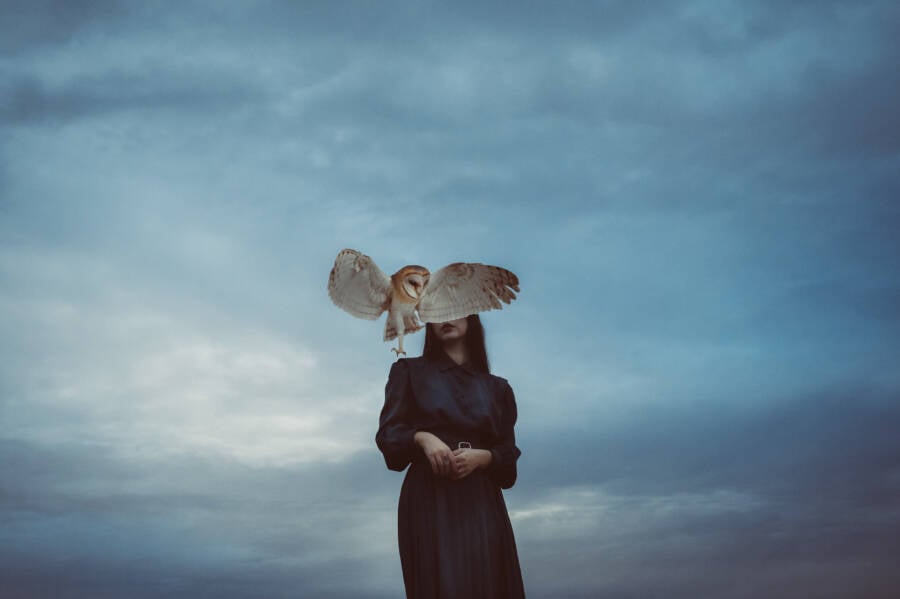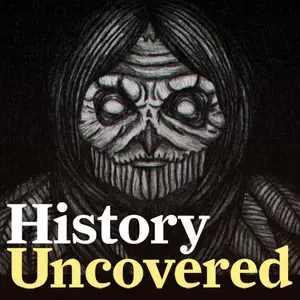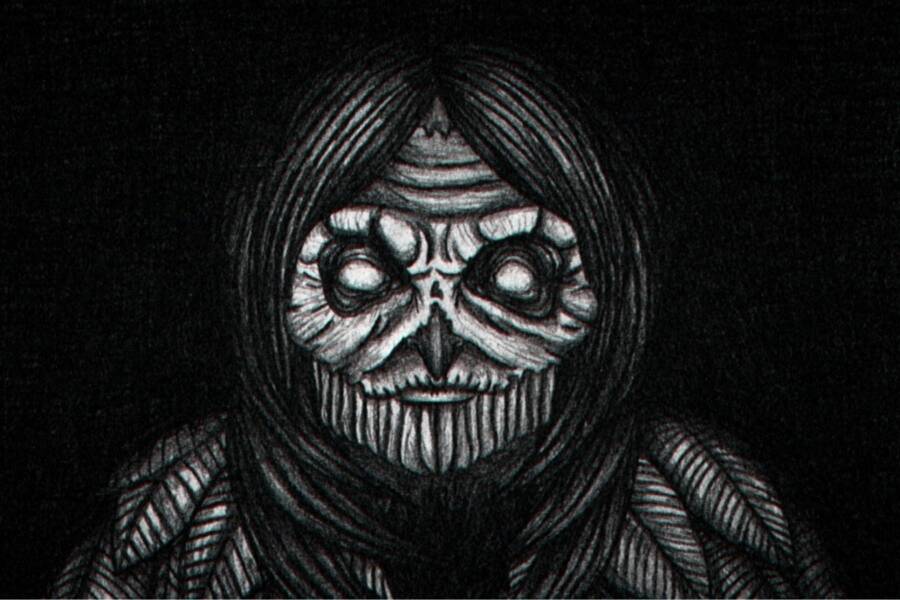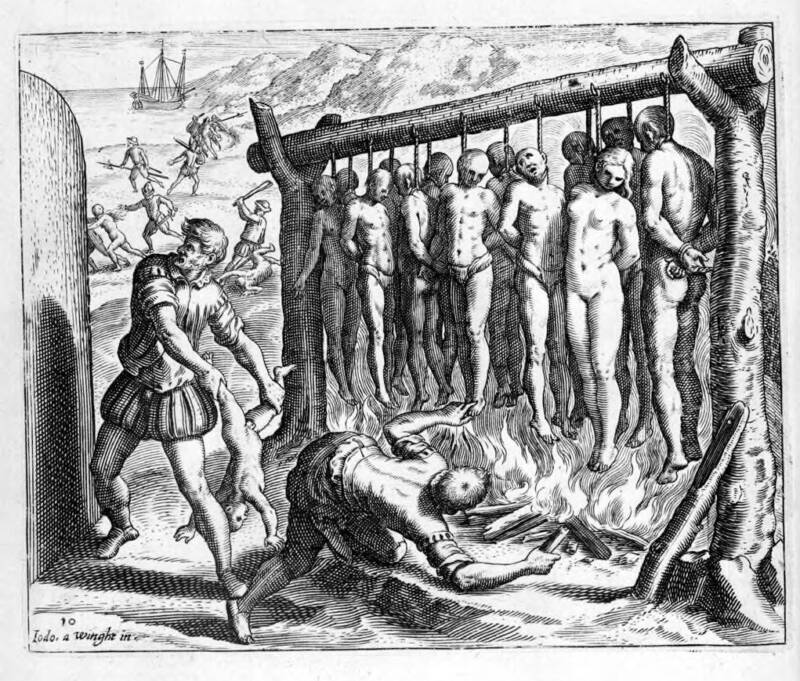According to centuries-old folklore, La Lechuza has the face of an old woman atop the body of an owl and she preys on drunk men and children in the dead of night.

Getty ImagesSome stories claim that La Lechuza is a witch, while others say it is an owl sworn to do a witch’s bidding.
Along the border of Northern Mexico and Texas’ Rio Grande Valley, there are whispers of a creature known as La Lechuza, a seven-foot owl with a woman’s face whose cries can be heard at night, enticing victims to wander into her clutches.
In some tellings, La Lechuza was once a human woman, but an act of cruelty committed against her or her child turned her into a vengeful monster. In others, La Lechuza is a witch’s familiar, serving her mistress’ will by abducting children, or perhaps she is a servant of Satan himself, one who feeds on the negative emotions of the humans who have the misfortune of encountering her.
In every version of the legend, though, one thing is certain — seeing a Lechuza is a bad omen, perhaps of your own death, and never something to be taken lightly.

What Is La Lechuza?
Like many legends, descriptions of the Lechuza are inconsistent, with only a few similarities from story to story. However, the widely accepted understanding of the Lechuza describes the figure as a large owl, roughly seven feet tall with a wingspan of 15 feet and an old woman’s face.
As writer Kayla Padilla recounted in the Trinitonian, stories of the Lechuza are prominent in some regions of Mexico and Texas. In Padilla’s hometown, it was said the Lechuza — literally translated to “owl” — was a white owl possessed by a witch. Elsewhere, however, the Lechuza might take the form of a woman during the day and an owl at night. Again, the details differ.

FacebookThe Lechuza is said to steal away both children and drunkards, depending on the version of the tale.
Many versions of the story, including Padilla’s, say that La Lechuza will make sounds like a crying infant, hoping to draw its victim out into the open where it can snatch them up and then return to its lair, prey in its clutches. A person also should not look at a Lechuza’s face for too long, lest the creature become angry.
Some believe that while the Lechuza is out hunting, its human body remains elsewhere, usually in a locked room, unconscious. Many believe that killing a Lechuza also kills the person inhabiting it — and that a special prayer can unveil the true identity of a Lechuza within a community.
One of the most popular recurring themes in La Lechuza legends, according to Mexico Unexplained, is that the Lechuza was once a human woman who was wronged in some way and now roams the Earth as a half-human creature seeking revenge.
Some versions of the story say her child was killed for a crime he did not commit, so now she steals lost children away from their parents. Another variation of the tale says the Lechuza’s child was killed by a drunk man, and that she exacts her revenge by preying on drunks who stumble out of local bars.
Most tales of the Lechuza emphasize the difficulty of killing or warding off the mythical creature. It can’t be hurt by bullets — and one who attempts to shoot it and fails to kill it dies in its stead. Anyone the Lechuza touches, even if it is just one feather from its wings, dies. Dreaming about the Lechuza means a family member will soon die.
Encountering a Lechuza, then, means almost certain death. Still, there are several methods of warding off a Lechuza, most of which involve the incantation of prayers or the appliance of herbs such as Chile powder and salt, but like the legends themselves, these methods differ from story to story.
But with so many versions of the legend, how did stories of La Lechuza begin in the first place?
The Origins Of La Lechuza In Folk Tales
Like many folk stories, tales of the Lechuza were passed along orally, which makes it difficult to determine the original source of the legend — after all, there is no known written account that might definitively pinpoint a sole author. Rather, it’s likely that the legend of the Lechuza evolved over time, with input and variations from every person who told the story.
But experts have been able to loosely trace the story back to its roots and offer a broader understanding of where, when, and perhaps most importantly, why this legend came about.

Public DomainA 19th-century illustration depicting the cruel atrocities of Spanish colonizers in Mesoamerica.
In pre-Columbian Mesoamerica, indigenous peoples developed spiritual bonds with animals. Their relationships with nature influenced their relationships with the gods.
Speaking with NPR’s “Latino USA” podcast, University of Texas Rio Grande Valley Anthropologist Servando Z. Hinojosa explained, “Life exists in many different orders. It exists in a human order of being, it exists in animal orders of being, but these were not entirely separate. There were permeable boundaries between them.”
When conquering Spaniards came to Mesoamerica, Hinojosa said, they brought with them firm Christian beliefs — and condemned the beliefs of the natives as Paganism and devilry.
The Spanish colonizers swiftly sought to expel these ideas and replace them with Catholic values. And given the time period, roughly 500 years ago, the fear and persecution of “witchcraft” was deeply embedded in the Christian belief system — and nocturnal animals such as cats and owls became inextricably linked to witchcraft.
“No longer were they seen as spiritual allies or other forms of humans or deities,” Hinojosa said. “Now they were seen more and more as how the Europeans had been seeing them for centuries — as evidence of a kind of strange partnership with dark forces.”

Getty ImagesA white barn owl, the appearance of which is similar to that of La Lechuza in many stories.
As Christian values took hold of colonial Spanish Mesoamerica, they also slowly began to embed themselves in the narratives of traditional oral storytelling. Eventually, the owl became a symbol of evil associated with witchcraft, a bad omen and a symbol of death.
Thus, the Lechuza was born.
Disturbing Modern Accounts Of Encounters With The Mythical Creatuer
While the Lechuza may not share the fame of some of its legendary brethren — such as the Wendigo or Bigfoot — north of the border, the mythical witch-owl has firmly rooted itself in the culture of northern Mexico and the Rio Grande Valley.
To this day, people share stories of real-life encounters that they claim to have had with the Lechuza. One such example comes from a user on Reddit, who wrote:
“This happened when I was only a few weeks old and my mother decided to go to Mexico to show me to her family who lives there… My mother told me that her family decided to have a big party to celebrate our arrival. When it was over, my grandmother took my mom and I to the guest bedroom where we would be sleeping… As we got settled, my grandma’s Rottweiler named Rocky came in, he didn’t want to leave so he stayed in our room. It was also hot that night, so my mom opened a sliding glass door that lead to a balcony open to let some air in for the night, we were on the second floor, so she felt safe leaving it open.”
The writer goes on to describe how their mother awoke in the middle of the night to find Rocky, typically a gentle, quiet dog, barking at the window, and the infant wailing, face down on the mattress.
Rocky was barking at something out on the balcony, and when the writer’s mother turned to see what it was, she couldn’t believe her eyes. Before her was a massive, hideous owl with feathers as black as coal.

TwitterAn illustration by manga artist Junji Ito of a woman-faced bird, another common descriptor of the Lechuza’s appearance.
Rocky darted for the owl, but the giant creature flew away. According to the writer, their grandfather later found a cut on the baby’s small leg and noticed that the pillows had been thrown across the room.
“Today, my mother tells me that I survived a kidnapping attempt from la lechuza,” the Reddit user wrote. “Whenever I go visit my family, they always call me lechuzita, as a remembrance for surviving la lechuza’s attempt. The real hero here, though, is my grandma’s dog, Rocky.”
Of course, anything on the internet should be taken with a grain of salt. Still, there are hundreds of stories shared online that speak of the Lechuza, and for some, the fear is very much real.
From a cultural perspective, the legend of the Lechuza stands as a symbol of the history and beliefs of a group of people, one that has morphed over the years as the culture around it changed. Today, La Lechuza strikes fear into the hearts of countless people who, before colonization, may have once considered creatures like the owl a friend.
The Lechuza is not the only creepy legend from south of the border — learn about La Llarona, the spirit said to have killed her own children and who now roams the Earth looking for her next victims. Then, read about more of the most chilling monsters of Native American folklore.





